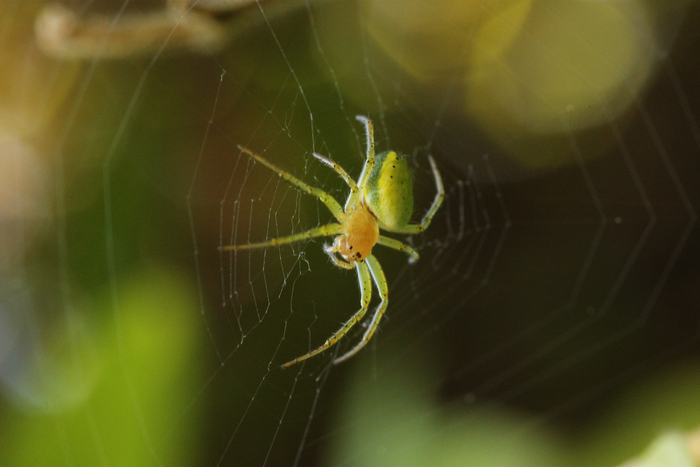Cities are bursting with life, both human and animal. The smallest of them, insects, spiders, and ants are easily overseen, but their presence – or absence – in cities has wide-reaching effects. Scientists in Austria have published a study in Frontiers in Ecology and Evolution, which found a correlation between the presence of arthropods – invertebrate animals with an exoskeleton; among them are bees, insects, and spiders – and level of urbanization.

Credit: Dr Marion Chatelain
Cities are bursting with life, both human and animal. The smallest of them, insects, spiders, and ants are easily overseen, but their presence – or absence – in cities has wide-reaching effects. Scientists in Austria have published a study in Frontiers in Ecology and Evolution, which found a correlation between the presence of arthropods – invertebrate animals with an exoskeleton; among them are bees, insects, and spiders – and level of urbanization.
“We show that richness and diversity of arthropods on trees and bushes decreases along the rural-urban gradient,” said first author Dr Marion Chatelain, a postdoctoral researcher at the University of Innsbruck, Austria. “More specifically, we show that urbanization disfavors wingless groups, particularly so on trees. Indeed, web spiders and springtails are less likely to be found in the city, where, on the contrary, aphids, woodlice and flies are common.”
From bush to treetop
“In this study, we compared how different indexes of urbanization shape arthropod communities,” explained Chatelain. To do so, they collected arthropod samples at 180 sites within an area covering 56.5 sq km in and around the Austrian city of Innsbruck.
At each site, samples were collected in three micro-habitats: the canopy, the tree bark, and the bush layer. By measuring the percentage of paved-over and built-up area, vegetation or trees, Chatelain and her colleagues estimated the level of urbanization within 100 meters, 500 meters and 1000 meters around each site. Then they tested the impact it had on the total number of arthropods (abundance), how many different taxonomic groups were present (richness), and what arthropods were present. The team also considered diversity, a metric taking both abundance and richness into account. Measuring the level of urbanization at different scales allowed to better explain the effects of urbanization on arthropod communities.
Urbanization bugs unwinged, carnivorous, web-building arthropods
Their findings showed a correlation between the level of urbanization and total arthropod numbers in the bush layer. The more urbanized the site was, the more bark lice and crab spiders dwelled on the shrubs – a pattern that may be due to more nutritious leaves in the bush layer in cities. In the canopy, certain species, like flies, increased in more urbanized areas, whereas certain groups of spiders were found less often. This may indicate an advantage of winged arthropods in cities, likely because of their increased ability to move between isolated green spaces.
Chatelain and her team also observed type-specific effects on bugs. For example, they found web-building spiders at consistently lower density than those that actively hunt, such as crab spiders. This suggests that the decline or increase of spider groups correlates with their hunting modes. The lower occurrence of four out of ten spider families examined in the study, suggests a direct impact on plant-eating bugs, which were found more often in urban settings.
Certain arthropod groups do well in cities while other don’t, the scientists said. This, however, offers no direct conclusion on total bug numbers: “Because some groups thrive while other are filtered from urban areas, there are at least as many arthropods in the city as in the rural surrounding,” Chatelain stated. “In fact, in bushes, arthropods, especially bark lice and crab spiders, are actually more abundant in the city.”
From bugs to birds
The researchers also pointed out possible bottom-up effects on insect-eating birds. “Our results suggest that urbanization affects the availability of arthropod prey, which is expected to have consequences on predator nutritional status, foraging behavior, reproduction success, survival and distribution within the urban landscape,” Chatelain said. “This study is part of a larger project aiming at understanding the effects of urbanization on food availability, diet and nutritional status of great tits and blue tits.”
Journal
Frontiers in Ecology and Evolution
DOI
10.3389/fevo.2023.980387
Method of Research
Observational study
Subject of Research
Animals
Article Title
Urban-driven decrease in arthropod richness and diversity associated with group-specific changes in arthropod abundance
Article Publication Date
7-Mar-2023
COI Statement
The authors declare that the research was conducted in the absence of any commercial or financial
relationships that could be construed as a potential conflict of interest.





